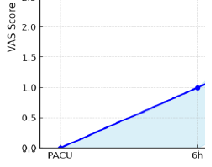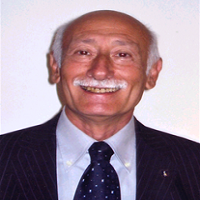Clinical Experience with Caudal Epidural Block in Adult Anorectal Surgery: A Case Series
Keywords:
Caudal epidural block, Anorectal surgery, Postoperative analgesia, Hemorrhoidectomy, Regional anesthesiaAbstract
This prospective, observational case series evaluated the postoperative analgesic efficacy and safety of caudal epidural blocks in 36 adult patients undergoing elective hemorrhoidectomy under general anesthesia at Centro Médico ABC from March 2024 to February 2025. Postoperative pain scores remained consistently low, with median Visual Analog Scale (VAS) scores of 0 in the Post-Anesthesia Care Unit (PACU), 1 at 6 hours, 2 at 12 hours, and 2 at 24 hours. No patient required rescue analgesia in the PACU, and fewer than 15% required opioid or NSAID rescue medication at any point within the first 24 hours. The anesthetic mixture typically included ropivacaine (mean 37.5 mL) and lidocaine (mean 100 mL), with clonidine administered in 55.6% of cases. Intraoperative hypotension (MAP < 65 mmHg) occurred in 55.6% of patients and was managed with ephedrine in 50% of cases. Importantly, no block-related complications, such as urinary retention or systemic toxicity, were reported. These findings suggest that caudal epidural block is a viable, safe, and effective regional anesthetic technique for providing sustained postoperative analgesia in adult anorectal surgery, potentially reducing opioid exposure and facilitating ambulatory recovery.
Downloads
References
Wiegele M, Marhofer P, Lönnqvist PA. Caudal epidural blocks in paediatric patients: a review and practical considerations. Br J Anaesth. 2019;122(4):509–17. doi:10.1016/j.bja.2018.11.030.
Tariq W, Sarfaraz A, Tariq HB, Khan MAS, Naqvi MAS, Buland K. Comparison of post-operative analgesic requirement in patients undergoing hemorrhoidectomy under caudal epidural anaesthesia versus saddle anaesthesia. Pak Armed Forces Med J. 2024;74(4):994–8. doi:10.51253/pafmj.v74i4.7877.
Senoglu N, Senoglu M, Oksuz H, Gumusalan Y, Yuksel KZ, Zencirci B, et al. Landmarks of the sacral hiatus for caudal epidural block: an anatomical study. Br J Anaesth. 2005;95(5):692–5. doi:10.1093/bja/aei236.
Kao SC, Wu CC. Caudal epidural block: An updated review of anatomy and techniques. Biomed Res Int. 2017;2017:9217145. doi:10.1155/2017/9217145.
Villegas Pineda JC, Rosales Ramírez JC, González Estrada VE, Mendoza Chávez AA, Ramírez Zamudio MA, Tovilla Zárate CA. Caudal versus spinal anesthesia in anorectal surgery: A randomized controlled trial. Medicina (Kaunas). 2022;58(3):418. doi:10.3390/medicina58030418.
Vadhanan P, Rajendran I, Rajasekar P. Ultrasound‑guided caudal epidural anesthesia in adults for anorectal procedures. Anesth Essays Res. 2020;14(2):239–42. doi:10.4103/aer.AER_60_20.
Xie L, Tao H, Bao F, Zhu Y, Fang F, Bao X, et al. Major complications of caudal block: A prospective survey of 973 cases in adult anorectal surgery. Heliyon. 2023;9(6):e20759. doi:10.1016/j.heliyon.2023.e20759.
Berstock DA. Haemorrhoidectomy without tears. Ann R Coll Surg Engl. 1979 Jan;61(1):51-4. PMID: 420495; PMCID: PMC2494478.
Xu W, Wei H, Zhang T. Methods of prolonging the effect of caudal block in children. Front Pediatr. 2024 Jun 3;12:1406263. doi: 10.3389/fped.2024.1406263. PMID: 38887564; PMCID: PMC11180814.
Bhatnagar S, Arora MK, Srivastava A, Mishra S. Comparative study of caudal block and pudendal nerve block for postoperative analgesia in patients undergoing open hemorrhoidectomy. Saudi J Anaesth. 2011;5(2):176–9.doi:10.4103/1658-354X.82779.

Downloads
Published
How to Cite
Issue
Section
License
Copyright (c) 2025 Clinical Images and Case Reports

This work is licensed under a Creative Commons Attribution 4.0 International License.
Clinical Images and Case Reports












